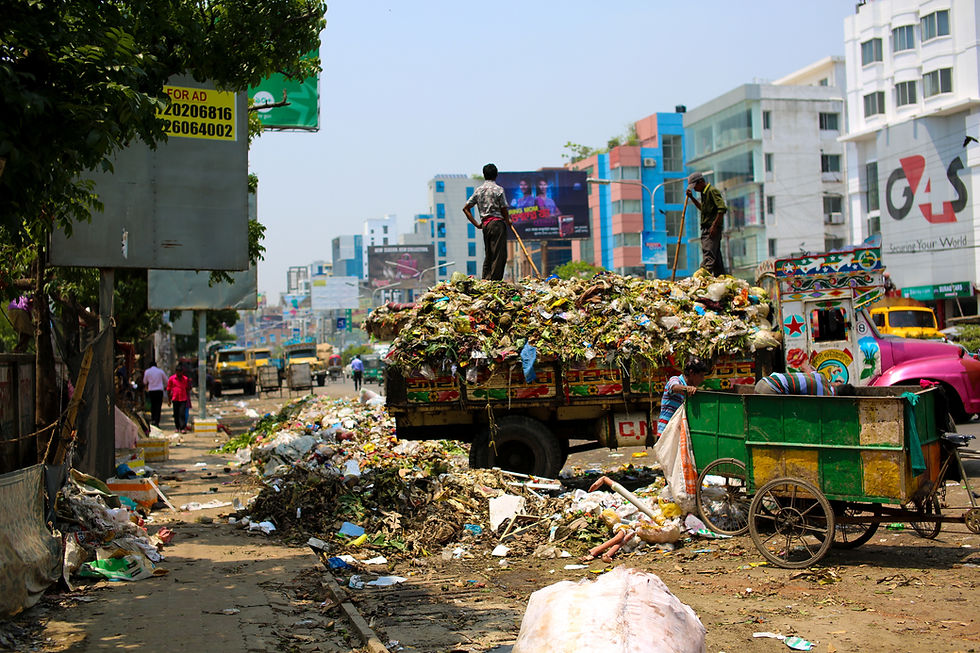Warning: The Next Global Pandemic? India and the Rise of Deadly Fungal Infections
- Joanne Lee
- Oct 9, 2021
- 4 min read
By Armaan Singh

COVID-19. If you were to say those words to the average person years ago, they would not know what you were talking about. Nowadays, however, images of quarantine and hospitals with patients packed like sardines come to mind. Fortunately, in America we see ourselves returning to some normalcy. Restaurants are opening up, friends are reuniting, and vaccines are rolling out. In underdeveloped nations such as India however, the reality is far different. A devastating second wave of COVID-19 has left thousands dead. A proper cremation has become a privilege and bodies have been dumped in the Ganges River or disposed of otherwise.
COVID-19 patients in India are experiencing rare fungal infections that are resulting in greater health complications and often death. Unsanitary hospitals, underdevelopment and the overuse of steroids as COVID-19 treatment have resulted in the proliferation of these rare and deadly fungal infections. This is a crisis -- and the world needs to be on alert. The rise in cases of these infections is a warning of the next possible global health disaster as they become more widespread and drug -resistant. There are three fungal infections that have appeared in India- known as black, white, and yellow fungi.
Black fungus is the nickname given to mucormycosis. According to the Centers for Disease Control and Prevention, mucormycosis is caused by a group of molds called mucormycetes, which are often found in soil and organic matter, like compost piles. Mucormycosis is a very rare fungal infection and it does not normally affect healthy people. The fungal spores are everywhere, but with damaged lungs, the fungus can take a deadly hold on a patient’s body. The combination of COVID-19 weakening the immune systems, and the overprescription of steroids, has resulted in the fungus spreading in Indian hospitals. Individuals with diabetes are particularly vulnerable to mucormycosis. According to Dr. Gangani of the Texas Health Arlington Memorial Hospital, “If they [COVID patients] have uncontrolled blood sugars to begin with, and if you use steroid on top of that, their blood sugar is going to be very uncontrolled,” he said. “High blood sugar will lead to acidic blood, and this particular fungus, it actually thrives in high blood sugar and high acidic environments.” Black fungus has resulted in 30,000 cases and 2,100 deaths. It begins at the site of trauma and may spread into the rest of the body. It is fatal if left untreated. Symptoms include: congestion, coughs, fever, and pain in the sinus areas. Antifungal treatments for this condition are often prescribed - yet those medications are in low supply. Taking into account the already strained hospital budgets and the high cost of these medicines, it is apparent how this disease is ravaging India.
White fungus is a new and more challenging fungal infection also popping up in India. It is known scientifically as Candida Auris, discovered a little over a decade ago, and is one of the world's most feared hospital microbes. This bloodstream infection is the most frequently detected germ in critical-care units around the world and has a mortality rate of around 70%. (Biswas, 2021) While exact case numbers are unknown at the time, it has begun to spread throughout India, most notably in the northern state of Uttar Pradesh. C. auris often springs up in unsanitary healthcare environments due to lack of funding and underdevelopment. C. auris can enter the body through the bloodstream or a wound. It is a yeast infection that is distinctly difficult to treat for a multitude of reasons. One reason is that C. auris’ has a distinct ability to “colonize” its host. This is similar to COVID’s asymptomatic properties which makes it hard to identify. C. auris is also resistant to most antifungal medicines, which makes it even more puzzling to treat. Prevention for C. auris is the ideal way to control the infection and warrants that healthcare environments be more sanitary.
Yellow fungus, also called mucor septicus, is a fungal infection that normally does not occur in humans, but in lizards. Mucor septicus is caused by high levels of humidity, poor hygiene and improper disposal of food. Severe symptoms include necrosis, organ failure and leakage of pus from slow healing wounds. Yellow fungus is given its name due to the yellow pus, in the affected area. It is functionally similar to black fungus in treatment and spread.
In conclusion, these fungi pose great danger to the Indian population and the world. Unsanitary hospital conditions, overuse of steroids in treatment of Covid 19 patients, and the high number of diabetic patients create ideal conditions for the proliferation and spread of fungal infections. This grave challenge to the health and safety of the Indian population is an urgent call to ensure proper hygiene and sanitation in hospitals, to avoid overuse of steroids in treatment protocols, and further to educate the public about the risks and very real dangers of fungal infections and their spread. This is also a warning to the world that these drug-resistant. Lethal, fungal infections can easily become our next pandemic.
What did you learn?
What is Black fungus?
Black fungus or mucormycosis is caused by a group of molds called mucormycetes, which are found in soil and organic matter, like compost piles. Mucormycosis is a very rare fungal infection.
What is mucor septicus?
Yellow fungus or mucor septicus is a fungal infection that normally does not occur in humans, but in lizards. Mucor septicus is caused by high levels of humidity, poor hygiene and improper disposal of food.
Citations
https://www.deccanherald.com/national/covid-19-all-you-need-to-know-about-yellow-fungus-989747.html




Comments